Asian history is rich and diverse, tracing its roots and stories to the early days of man’s explorative spirit. From distinct cultural sites to national parks and pristine landscapes, Asia offers experiences that would satisfy any wanderer. The continent’s military history, diverse and lengthy, somehow doesn’t share the same pages as Napoleon’s triumphs or Washington’s courage. Conquests of the past, now naked to the eye, have left their marks in forever sculpting the political realities and national borders of Asia today. What was once the playground of warriors and warmongers is now beautiful poetry of the times that once were – relegated as elegant markers. The below few are just a sampling of the many sites that one can visit, providing a glimpse into Asia’s sometimes tumultuous and glorious past.
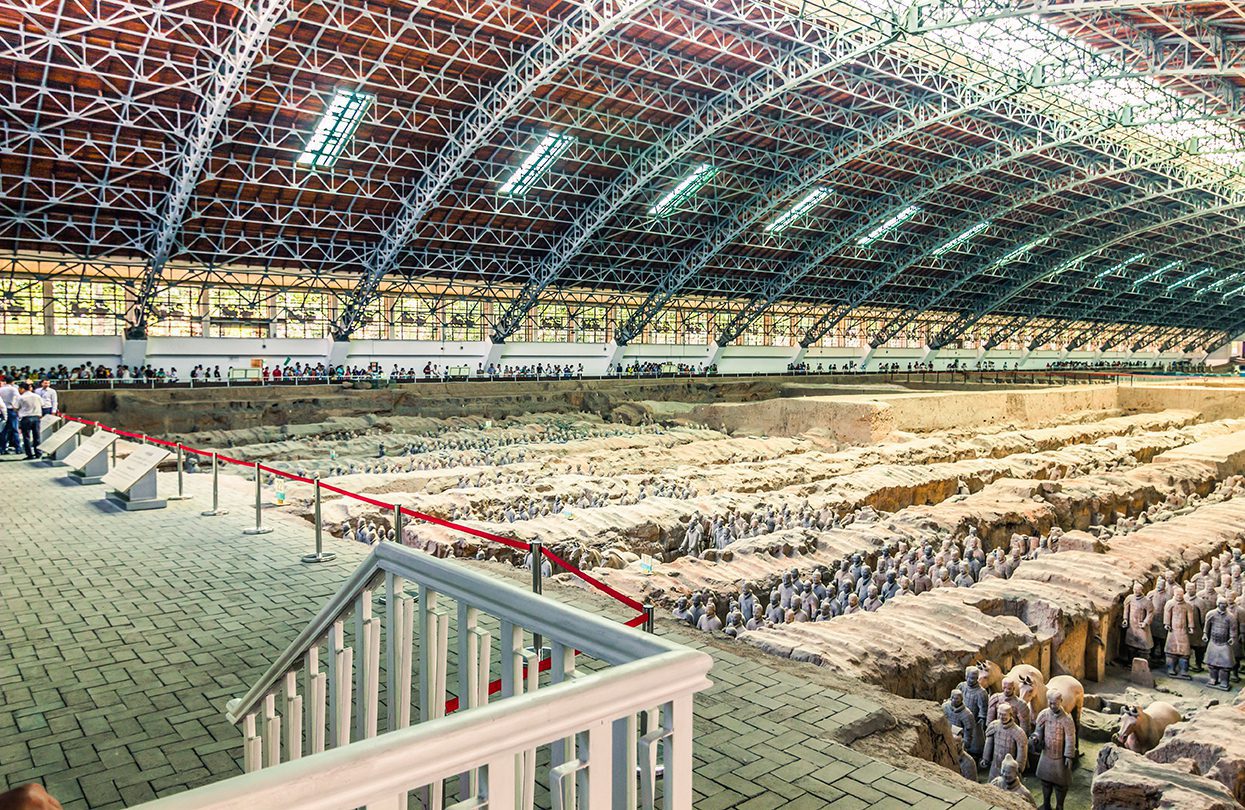
Pit one of the tombs of the Terracota Army, by RPBaiao
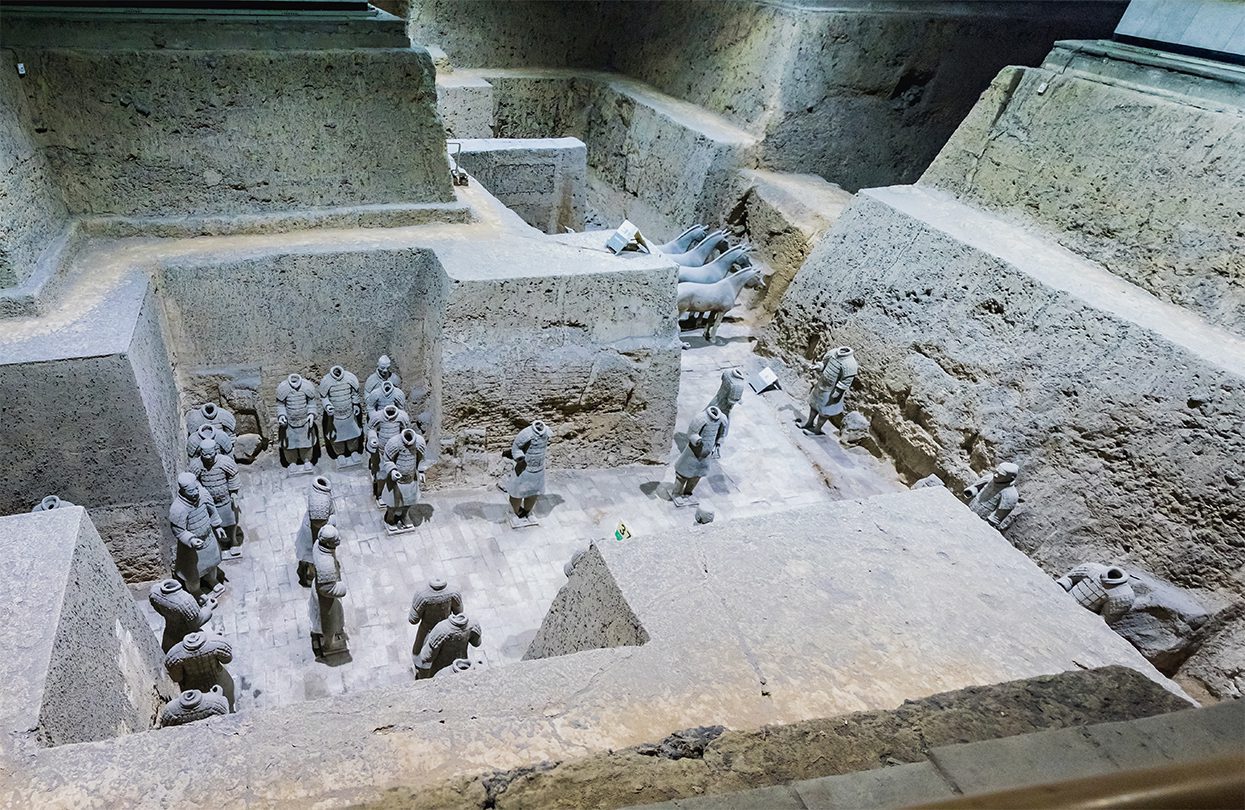
The Terracotta Army buried in the pits next to the Qin Shi Huang’s tomb in 210 to 209 BC, by Vatchara Ruttikul
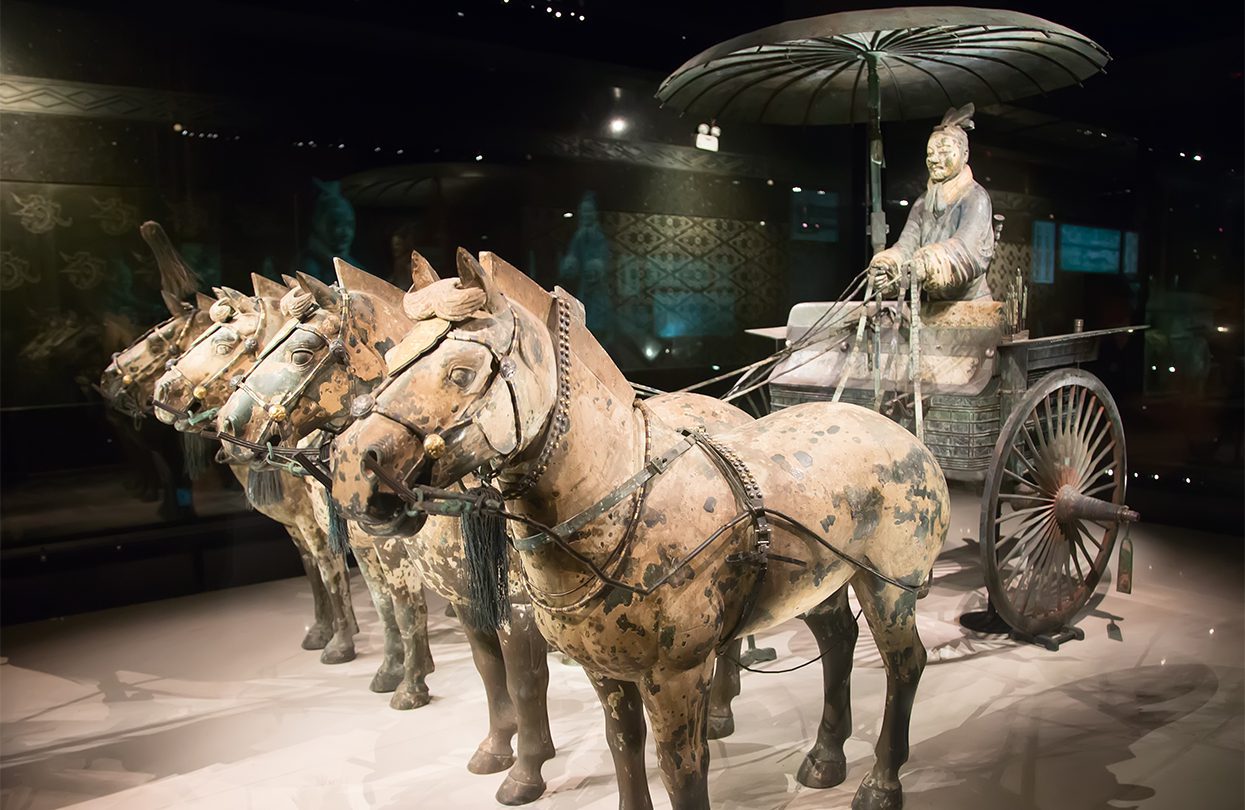
The mausoleum of Qin Shi Huang, first Emperor of China contains collection of terracotta sculptures of armored men and horses, by Fedor Selivanov
The Terracotta Army, China
This incredible collection of Terracotta sculptures depicts the armies of the first Emperor of China, Qin Shi Huang. It is said by some to be the eighth wonder of the world, is essentially funereal art. Qin Shi Huang became emperor when he was 38 years of age, having conquered other warring states and unifying all of China in 221 BC. He gave himself the title “emperor” and continued to rule until 210 BC. The term would continue to be used by Chinese rulers for the next 2000 years.
When Qin died, he was buried with a life-sized representation of his armies, including more than 8,000 soldiers, 150 cavalry horses, and 130 chariots with 520 horses, as well as several other non-military figures. The Terracotta Army is just a small part of a larger necropolis, which covers a whopping 98 square kilometres, and represents a part of the emperor’s imperial palace. Much of the site, which is the largest pottery figure collection in the world, has been uncovered. However, the tomb of Qin Shi Huang remains sealed due to its extremely fragile nature.
Today, the excavated areas of the site are protected from the elements and include an excellent museum complex. Visitors can view the figures from platforms above the excavated site, as well as individual figures and many other artefacts inside the museum itself. Warrior garments are also on display, so visitors can imagine exactly what the figures would have looked like in reality.
Where To Stay The dry air can take its toll on visitors to the archaeological site, but there are several luxury accommodation options available in nearby Xi’an. The Hyatt Regency Xi’an sits on the banks of Quijiang Lake, offering fantastic views as well as its lake view terrace. Likewise, the Shangri-La Hotel, Xi’an, has an on-site spa, inspired by the original Shangri-La.
Taking a trip along famous landmarks of the past that defines the way of life for four billion people today, we visit the famous emperors and generals of yesteryears, witnessing the beauty of their legacy.
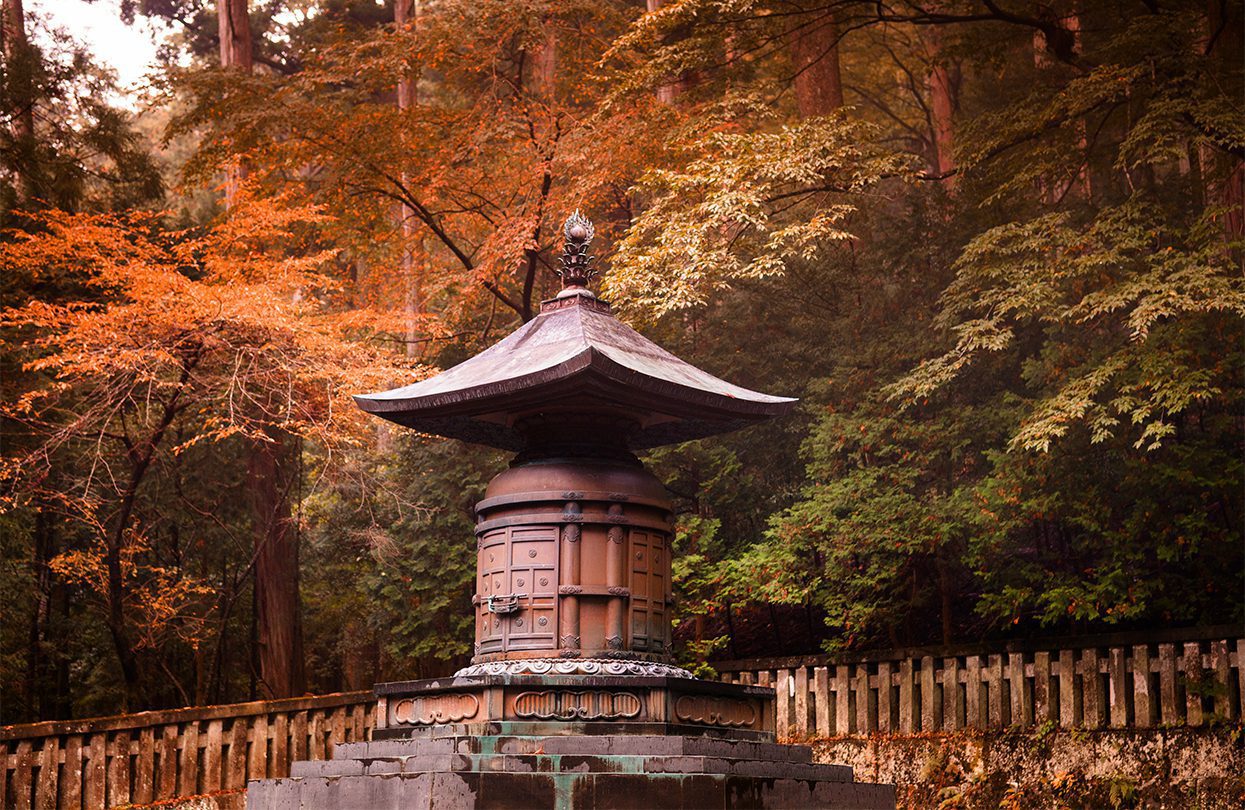
Tomb of Shogun Tokugawa Leyasu at Nikko Toshogu Shrine Tochigi, by PixHound
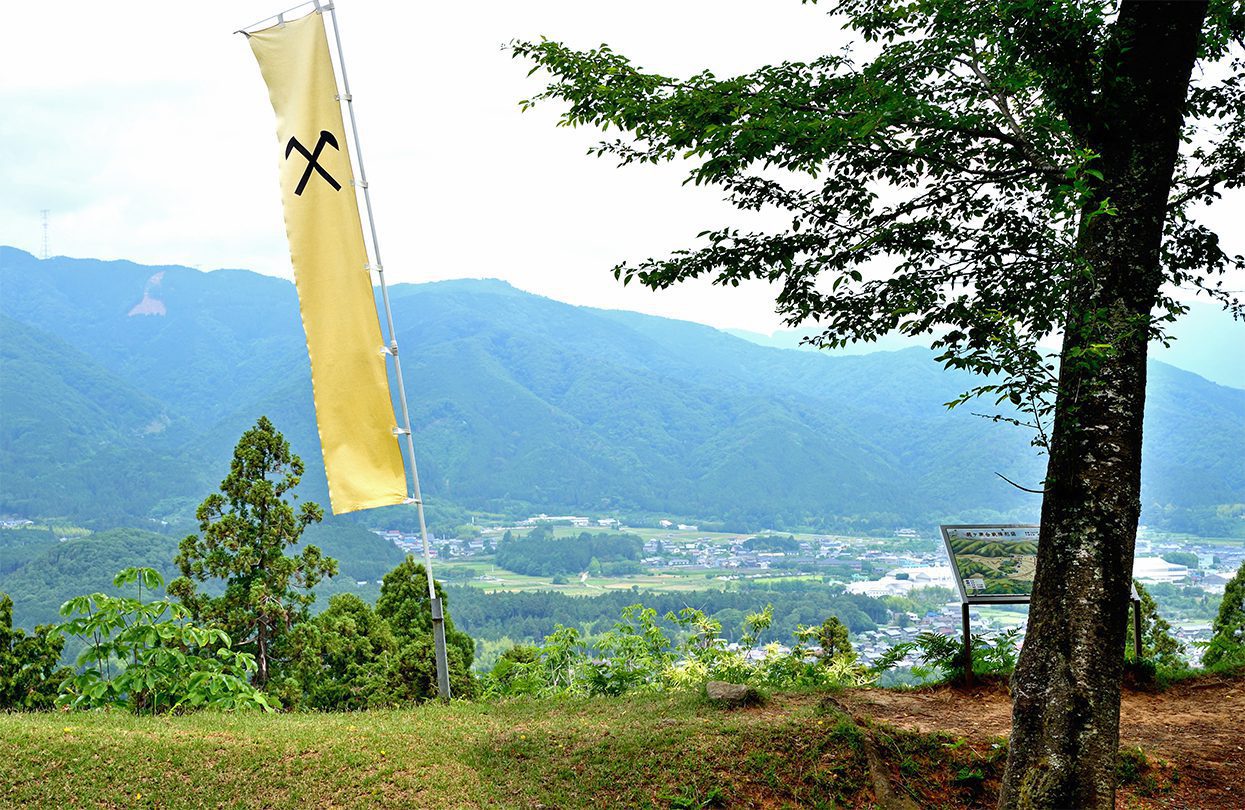
Ekigahara Japan Jun view from base camp trace of Kobayakawa Hideaki in Mt Matsuo, by hayakato
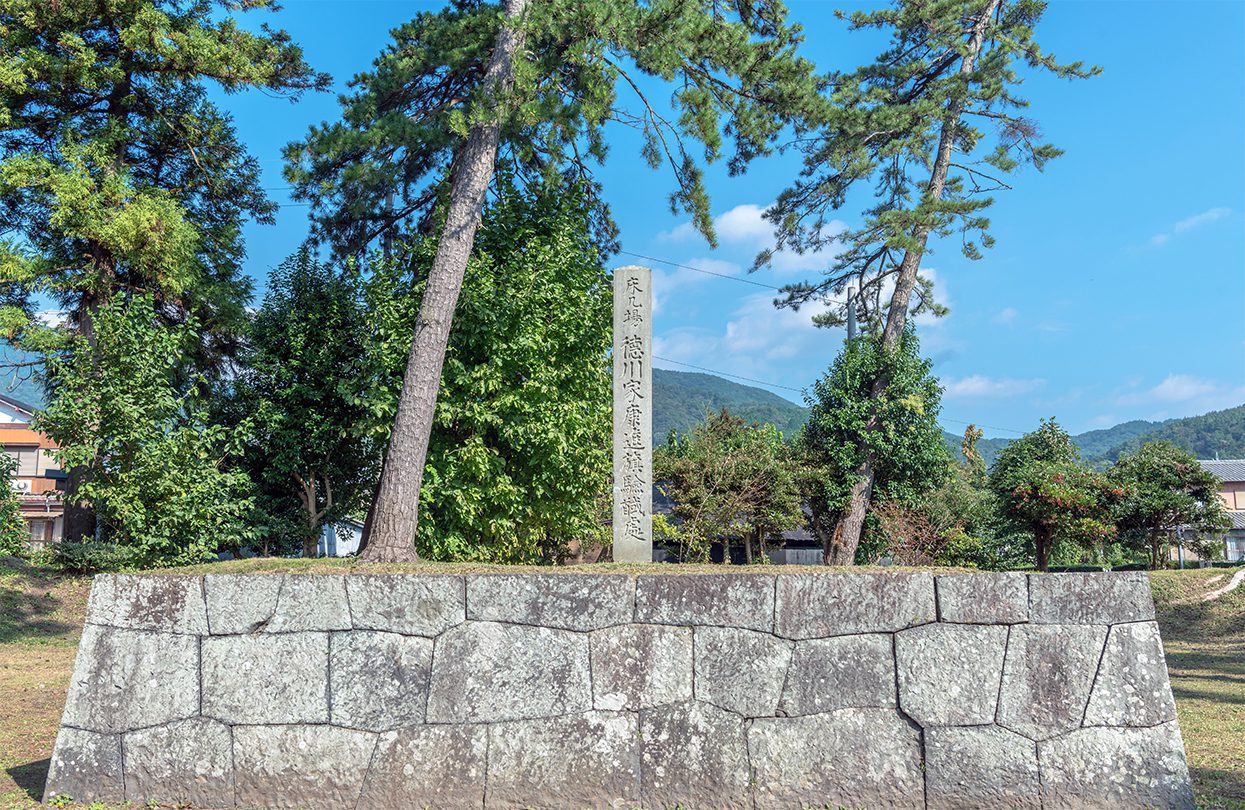
Base camp trace of Leyasu Tokugawa in Sekigahara, by mTaira
Battlefields Of Sekigahara, Japan
Fought on 21 October 1600, the battle of Sekigahara was the largest and bloodiest of all samurai battles that were fought during Japan’s civil war. The clash established the last feudal military dictatorship in Japan, the Tokugawa shogunate, which lasted until 1868.
The battle was fought between the Western and Eastern armies, amassing over 200,000 men between the two of them. Although the Western army outnumbered the Eastern, it was driven back over about 6 hours when several Western allies turned and came to the aid of the Eastern troops, which changed the course of the fight. The battle was a short, but significant one in Japan’s history, with the Western army accumulating as many as 32,000 casualties. Tokugawa Ieyasu, who controlled much of Eastern Japan, was invested as Shogun, and his family would control Japan for the next 250 years.
The site, which was designated a National Historic Site of Japan in 1931, can be visited today and includes the Sekigahara Town History and Folklore Museum. Inside, visitors can see replicas of the helmets worn at the battle, as well as a large diorama showing the progress of the battle itself. Visitors to the site can rent bicycles, which makes seeing the actual battlefield a little easier. You can even rent replica samurai armour, and tour the battlefield in warrior style.
Where To Stay Only 45 mins by train from Nagoya, and an hour from Kyoto, the site is easily accessible. Several luxury hotels are available in Nagoya, including the Gamagori Classic Hotel, and the Nagoya Kanko Hotel. In Kyoto, rejuvenate at the Ritz Carlton Kyoto, located on the banks of the Kamo River, the iconic Four Seasons Kyoto, with its 800-year-old pond garden or the Yoshida Sanso, former residence of the uncle of Emperor Akahito.
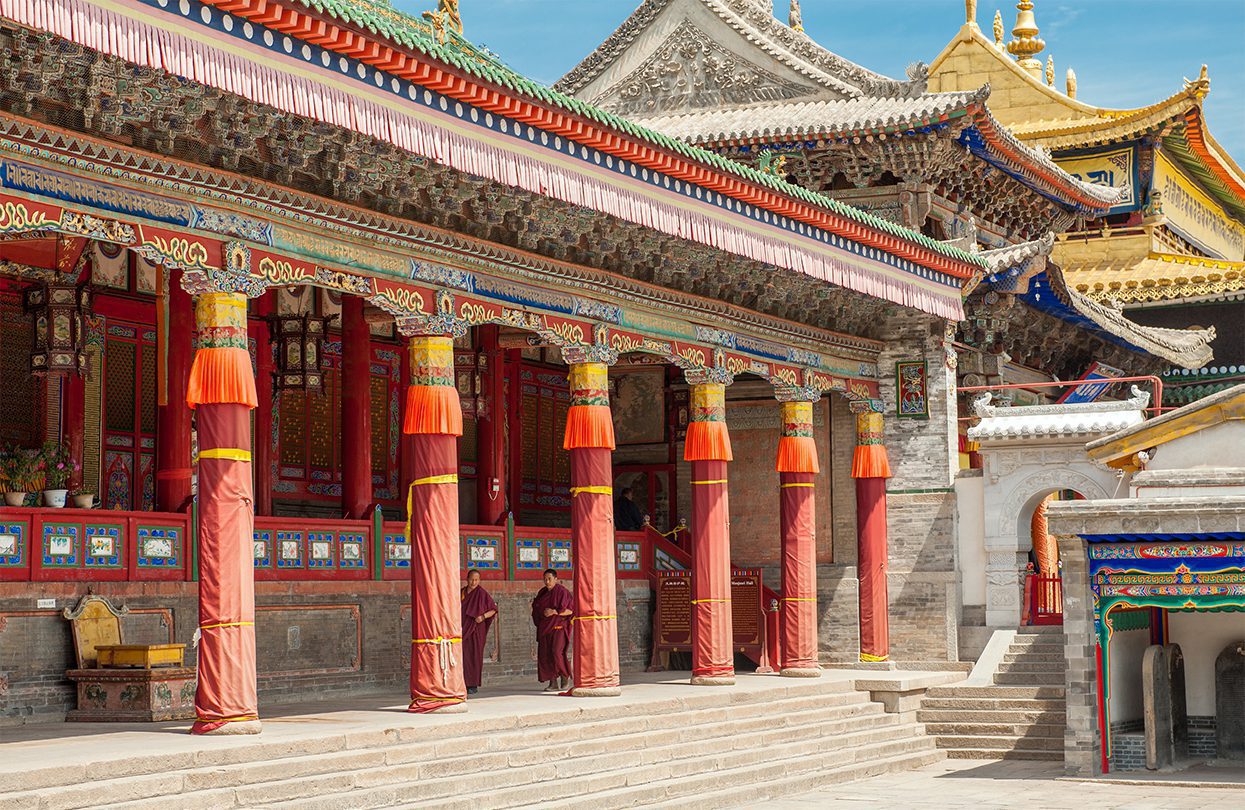
Kumbum Monastery in Qinghai Province – Tibetan Buddhist monastery founded in 1583 ranks second only to Lhasa in importance, by Rolf_52
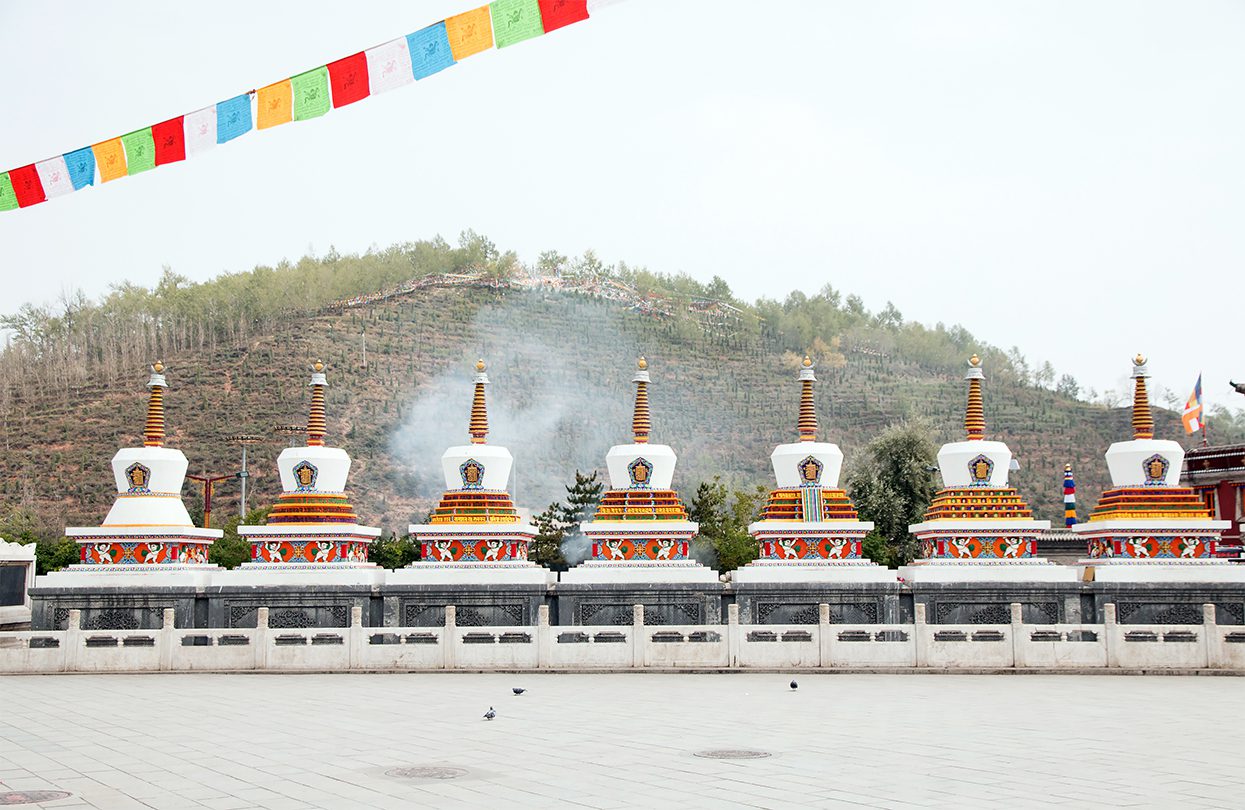
Pagodas at Kumbum Monastery, this famous Tibetan Buddhist monastery was founded in 1583, by Cindy Xiong
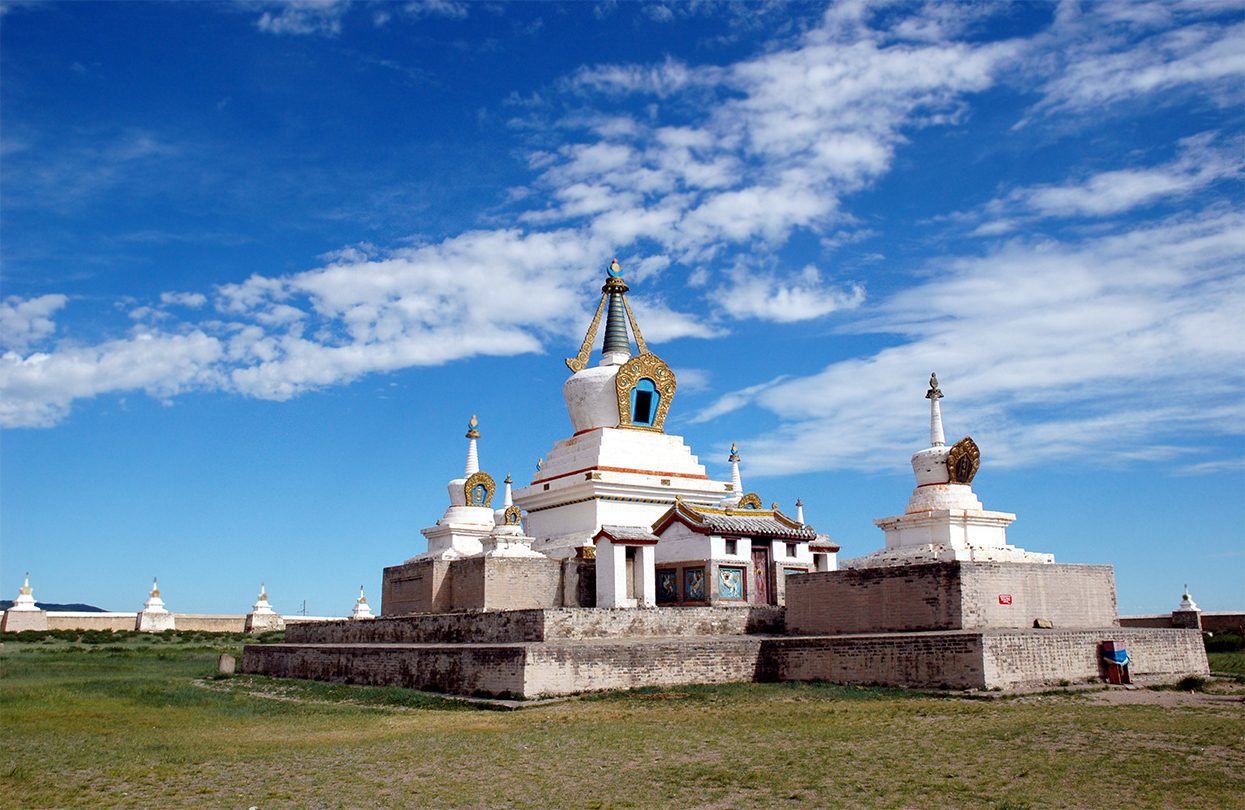
The Erdene zuu Monastary, near Karakorum, Mongolia, in Ovorkhangai Province, by LunaseeStudios
Mausoleum Of Genghis Khan, Inner Mongolia
The founder and first Great Khan of the Mongol Empire, Genghis Khan ruled over the united tribes of Northeast Asia, forming the largest contiguous empire in history. Known for his brutality during military campaigns, he formed the Mongol Empire through the large-scale slaughter of many groups. He is also credited, however, with making the Silk Road a more cohesive political environment, resulting in simplified communication and trade between Asia and Europe.
Born in 1162 as Temujin, Genghis Khan began to amass his army when he was only 20. By the time he was 42, he had defeated the powerful Naiman tribe, which gave him control over central and eastern Mongolia. He would continue to use his skills at military tactics, as well as an extensive network of spies, to advance in his campaigns. His army was exceptionally well-equipped and well-trained, and employed cavalry as well as foot soldiers and bowmen. He was named “universal ruler” or Genghis Khan in 1206 and would rule the enormous empire until his death in 1227.
Following his death, his remains were allegedly returned to central Mongolia where they were buried in an unmarked site, as per his wishes. The actual location of the site is a mystery to this day, but his descendants continued to honour his memory through the use of his personal effects. In all, nine “palaces” for rituals to his memory were maintained in the Karakorum. In 1368, these were replaced by eight white yurts, and later more permanent versions of the mausoleum were constructed in other sites. It finally found a home in Xining’s Kumbum Monastery in 1949, and underwent an extensive restoration in the 1980s, and again in the early 2000s, and has been named an AAAAA-rated attraction by the China National Tourism Administration. The site remains a sacred place for the Mongolian people, and retains great significance, even without the remains of Genghis Khan.
Where To Stay Visitors to the site can stay at several hotels that are a short distance from the monastery. The Sofitel Xining has fantastic views over the city, and the Wanda Realm Xining offers sleek décor and an on-site spa, for those much-needed foot massages after a long day of sightseeing.
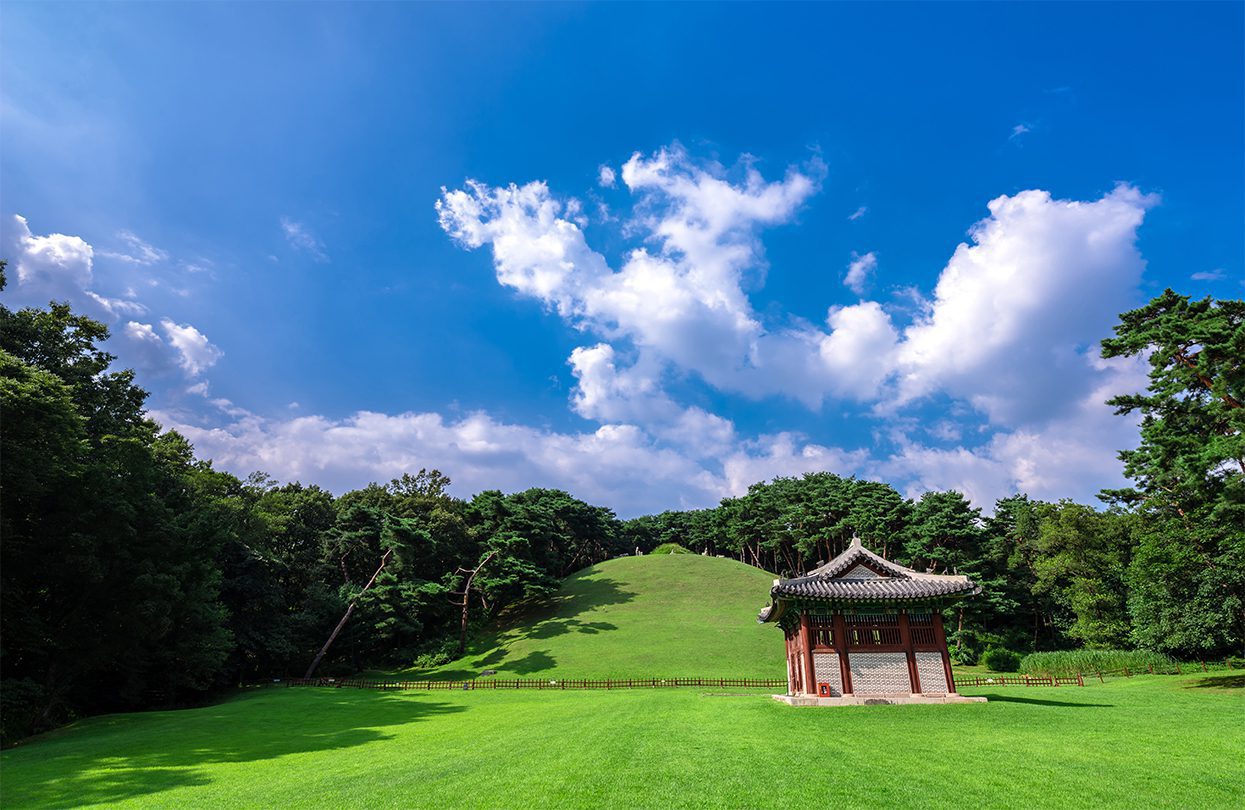
Donggureung Royal Tomb, Guri-si, South Korea – The first king of the Joseon Dynasty, the royal tomb of Yi Seong-gye, by SiHo
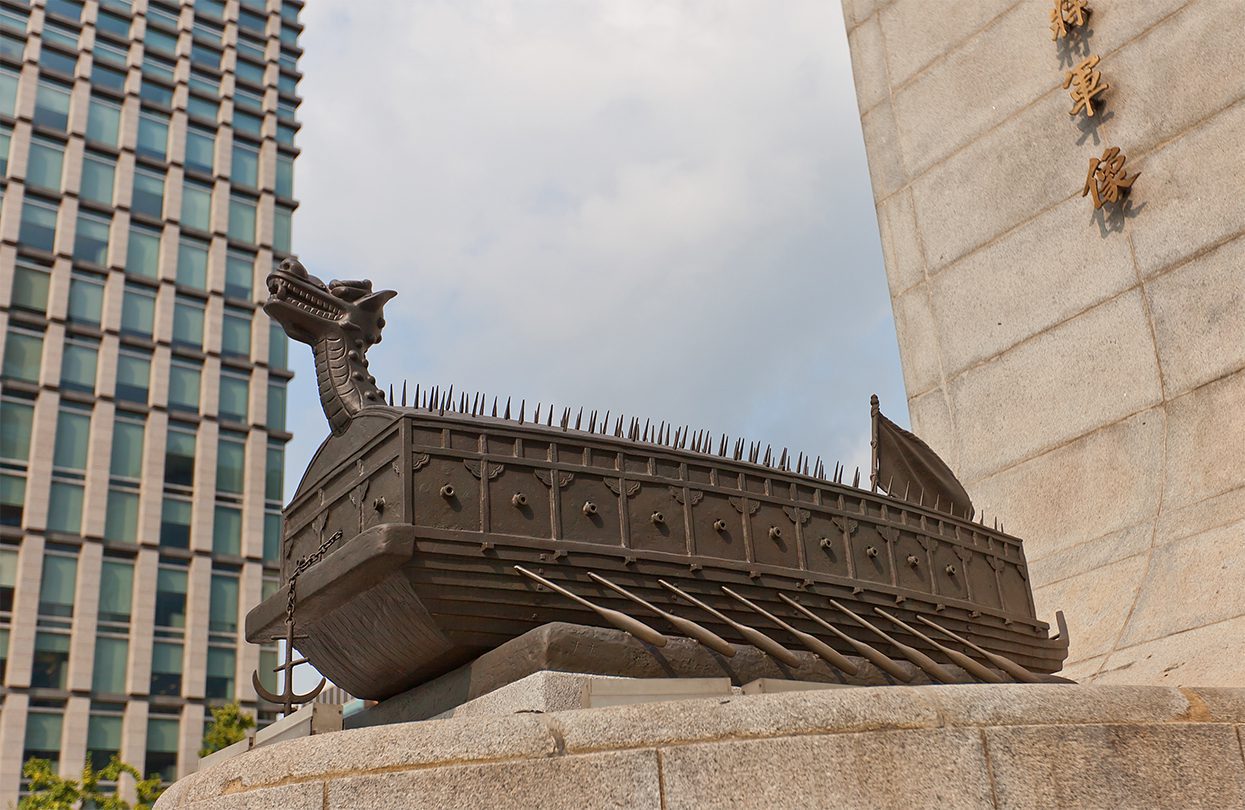
Sculpture of Turtle ship, also known as Geobukseon in Seoul, Korea. Part of monument (1968) to Yi Sun-shin, naval commander during Imjin war, by Joymsk140
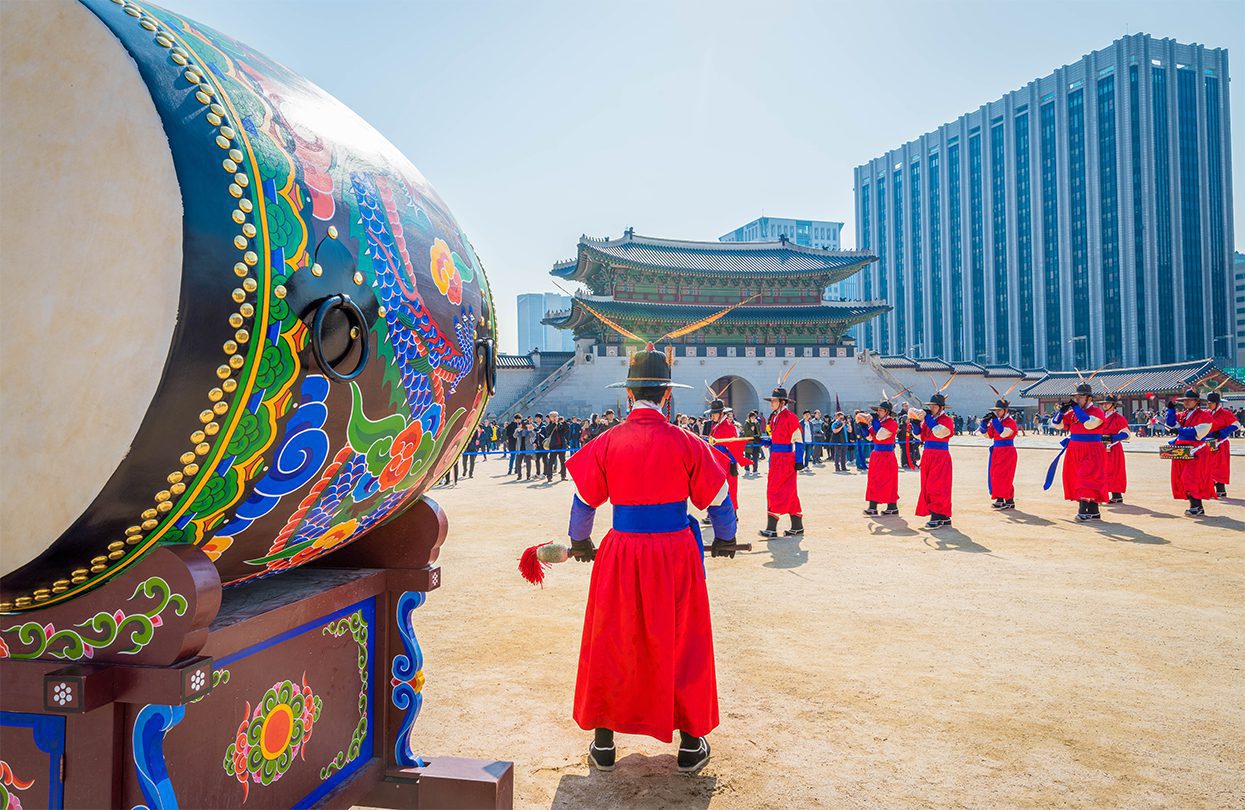
Soldiers with traditional Joseon Dynasty uniforms will protect Gyeongbokgung Palace in Seoul, South Korea by wittaya
The Battle Of Hansando, South Korea
Fought in August 1592, the Battle of Hansando, also known as the battle of Hansan Island, was one of the key battles in the Imjin War. The Korean Admiral, Y Sunsin, captured 12 Japanese ships and destroyed another 47, and the battle was a major turning point in Japanese leader Hideyoshi Toyotomi’s campaign. So epic was the battle that it is often argued to be the third largest naval battle in world history.
Other naval experts, such as the Vice Admiral of the British Royal Navy, George Ballard, admired Admiral Y. He wrote that “[Y] had achieved a series of successes unsurpassed in the whole annals of maritime war, destroying the enemy’s battle fleets, cutting his lines of communication, sweeping up his convoys, imperilling the situation of his victorious armies in the field, and bringing his ambitious schemes to utter ruin. Not even Nelson, Blake, or Jean Bart could have done more than this scarcely known representative of a small and cruelly oppressed nation.”
Admiral Y’s victory essentially ended Hideyoshi’s goal of conquering Ming China, via Korea. The battle of Hansando limited Hideyoshi’s ability to move supplies and men through Korea, thus completely hindering his attempts to move into China.
Today, Hansando sits as a part of the larger Hallyeohaes and National Park and includes more than 300 islands. Six of these islands, including Hansando, are linked by the babaengil trail, a network of ancient paths. From the trail, visitors can marvel at both the ocean and mountain views, and visit a lighthouse, as well as sandbar – perfect for dipping hot feet into the cool blue water. Along the path on Hansando, visitors can still see traces of Admiral Y’s victory, some 400+ years later, and discover more about the Admiral’s life.
Where To Stay There are several accommodation options a short drive from the national park, including the Stanford Hotel and Resort in Tongyeong.
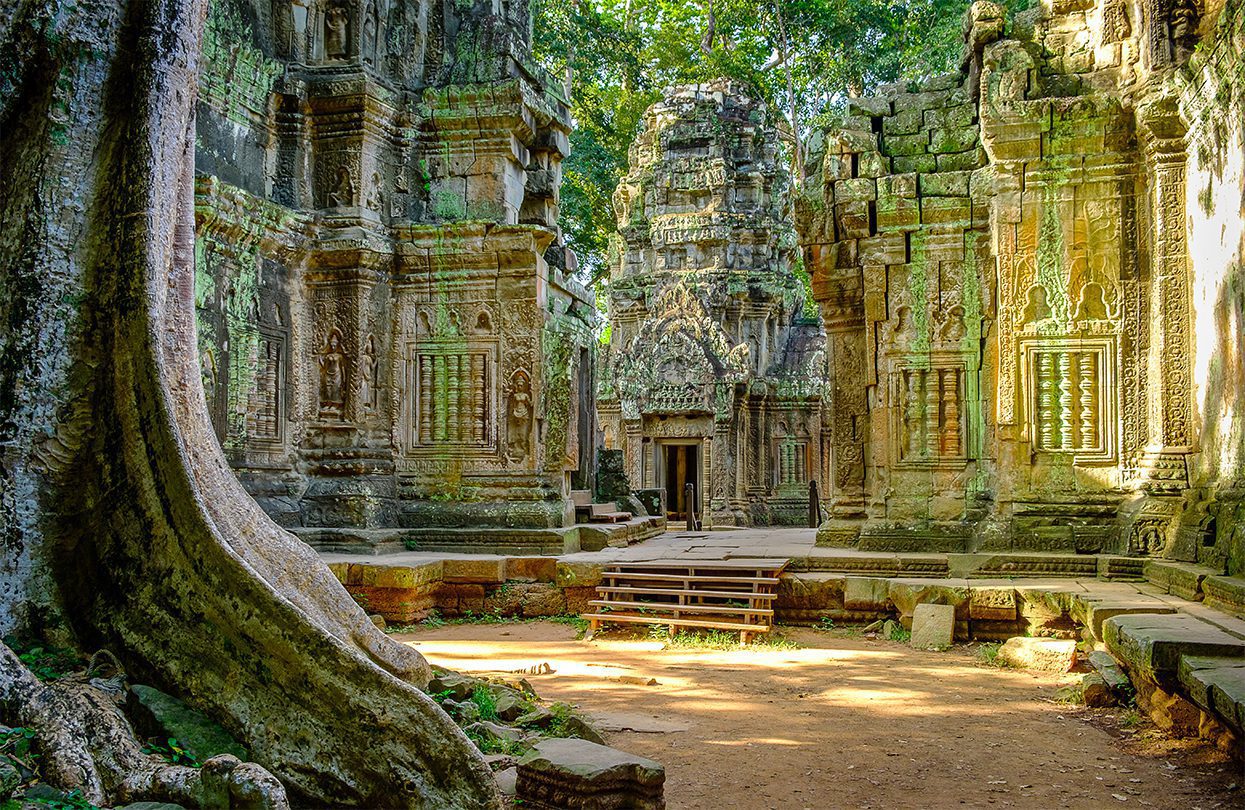
Ta Prohm temple in the morning light part of the Angkor Wat complex Seam Reap, by Mark R Croucher
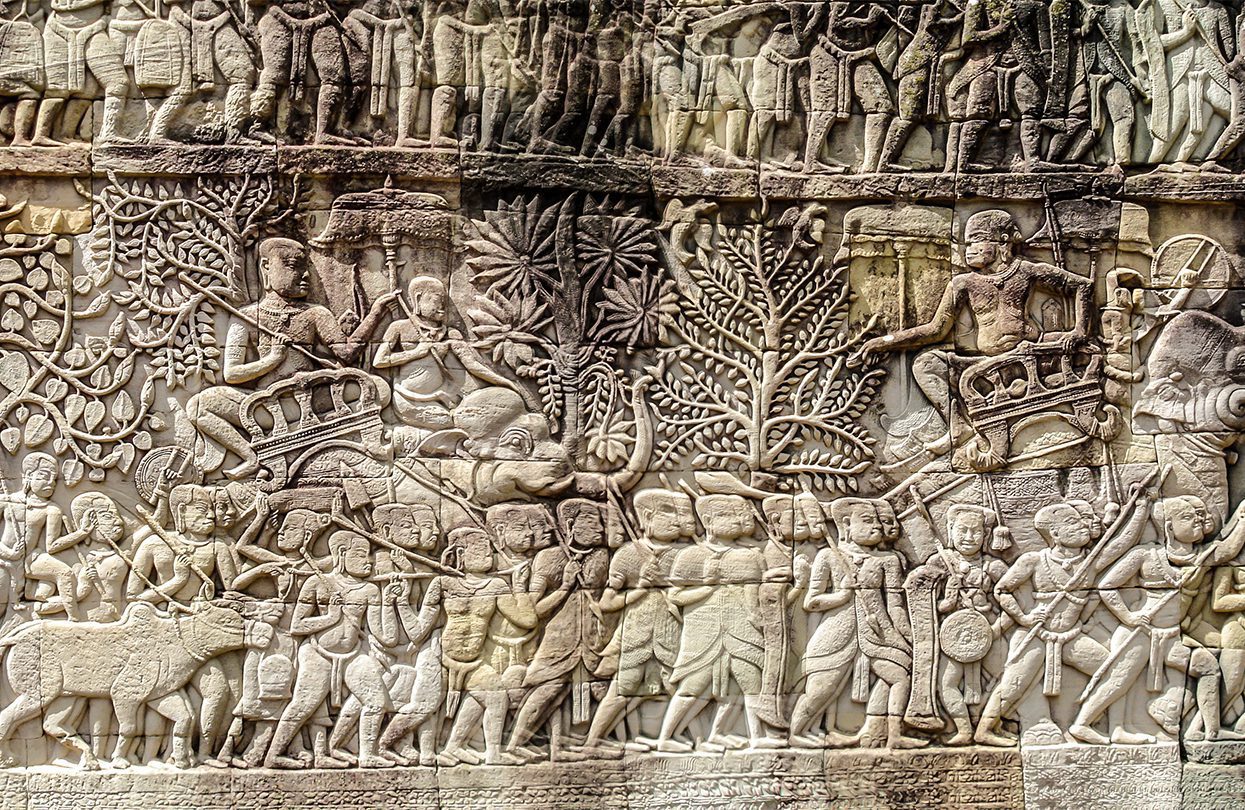
The Khmer (Angkor) Empire, Cambodia
Established in 802 AD and lasting until 1431, the Khmer Empire was a powerful state in South East Asia. At its height, it covered most of what is Cambodia, southern Vietnam, Laos, and Thailand today.
With the city of Angkor as its capital, the empire expanded across the region, primarily to the north and west. Its excursions into the east were less successful, with the Khmer fighting against two kingdoms: the Cham and the Vietnamese. However, the Khmer were never able to take these lands. The Cham, on the other hand, looted Angkor in 1177 AD, and pushed the empire to the edge, nearly causing its downfall.
Like most of the world’s great empires, peace and power came at a cost. The Khmer forces were continually putting down insurrections and rebellions by nobles, who were trying to gain independence. Conspiracies against the Khmer king were also not unusual and needed to be subdued, especially since royal successions were regularly contested.
The Khmer were excellent engineers and built huge irrigation systems, as well as large baray or reservoirs. They also constructed large road networks, and, perhaps most famously, enormous temples and religious monuments, such as those seen at Angkor Wat, completed under King Suryavarman II around 1122 AD. As time went on, the empire accumulated more and more wealth and participated in trade along the famed Silk Route, which connected it to India, China, Arabia and Europe.
Hindu warrior kings ruled the empire, the greatest of whom was Jayavarman VII, who ruled from 1181 to 1215 AD. They did not maintain standing armies but raised troops as required. When the Chams invaded Angkor, it was Jayavarman who ousted them, albeit with difficulty. He is known to have ordered the construction of several temples and monuments, as well as highways, Angkor Thom (a city within a city in Angkor), as well as one hundred hospitals. The empire was indeed at its pinnacle under Jayavarman.
At one point, the city of Angkor was the largest in the world, covering over a thousand square kilometres, which is about the same size as Los Angeles today. It is next to impossible to know how many people lived in Angkor at the time; however, estimates are around one million.
Today, The Angkor Archaeological Park, a UNESCO World Heritage Site, is one of the most important cultural sites in all of South-East Asia. It encompasses several temples, including Angkor Wat, where beautiful bas-relief galleries illustrate the empire’s naval strength and land forces, as well as its conquests throughout its history. The temple has recently been restored, allowing visitors to the site (over 2 million each year), to fully enjoy its splendour.
Where To Stay Accommodations for visitors to the site are plentiful in nearby Siem Reap. The Belmond La Résidence d’Angkor is a standout hotel in the area, known for its gorgeous finishes, salt-water pool, and Kong Kea Spa. Similarly, the Park Hyatt Siem Reap offers classic yet modern touches in the heart of the city. Several of its rooms include a private garden or plunge pool, and it has an excellent on-site spa. By Patricia Grimshaw◼
Subscribe to the latest edition now by clicking here.
© This article was first published in Aug-Sept 2019 edition of World Travel Magazine.

